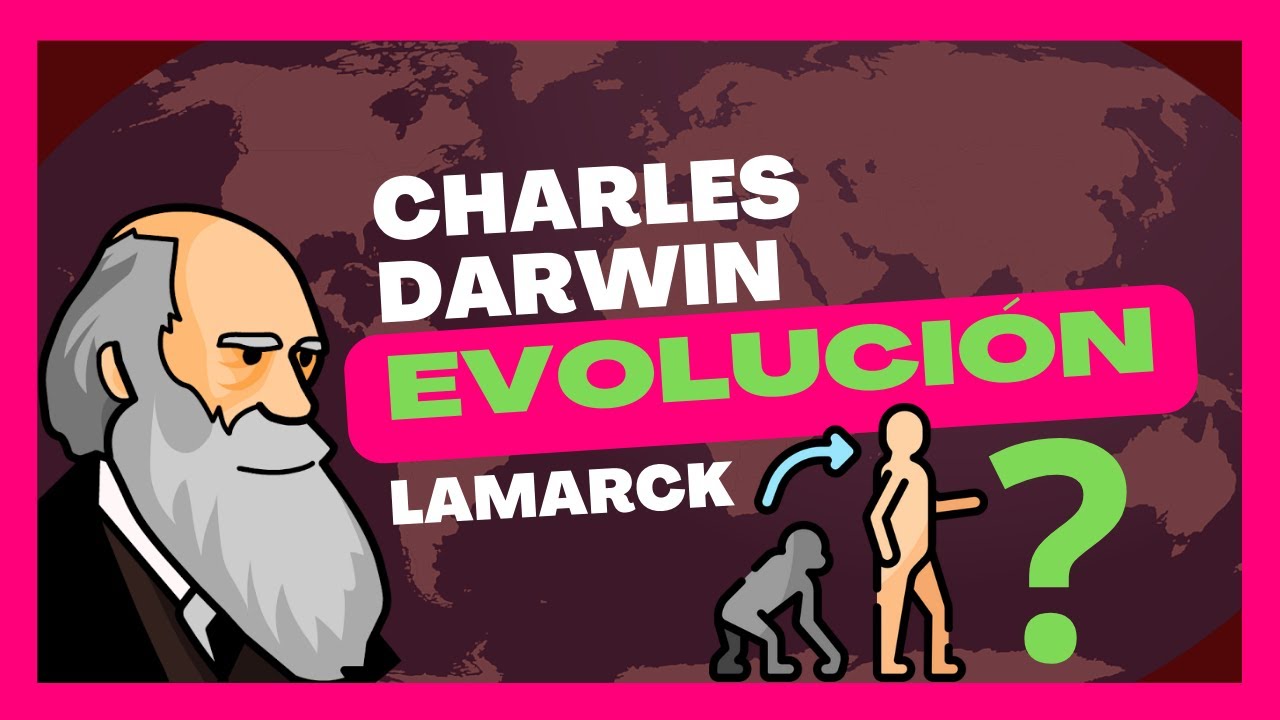Lamarck vs Darwin - Biology GCSE | kayscience.com
Summary
TLDRThis video compares the evolutionary theories of Charles Darwin and Jean-Baptiste Lamarck. Darwin's theory of evolution by natural selection is demonstrated using the example of giraffes, where those with longer necks survive and reproduce, passing on beneficial traits. In contrast, Lamarck's theory suggests that traits acquired during an organism's life, such as a giraffe stretching its neck, could be passed to offspring. The video explains how Darwin's theory is widely accepted and scientifically proven, while Lamarck's theory has been disproven, particularly with the understanding of genetics and inheritance.
Takeaways
- 😀 Charles Darwin's theory of evolution by natural selection is widely accepted as scientific fact today.
- 😀 Darwin's famous book, *On the Origin of Species*, outlined his ideas on evolution by natural selection.
- 😀 Darwin's theory suggests that species with beneficial traits survive and pass on these traits to their offspring.
- 😀 An example of Darwin's theory is the giraffe, where longer-necked giraffes survive and breed, while short-necked giraffes die off.
- 😀 At the time, Darwin's theory was controversial because it conflicted with religious views about creation.
- 😀 Darwin struggled to prove his theory because the science of genetics and chromosomes had not yet been discovered.
- 😀 Jean-Baptiste Lamarck's theory of evolution by acquired characteristics is considered disproven.
- 😀 According to Lamarck, animals could acquire traits during their lifetime (e.g., a giraffe stretching its neck), and pass them on to offspring.
- 😀 Lamarck used the example of the Okapi, suggesting that stretching to reach leaves would lead to a longer neck, which would then be inherited.
- 😀 Lamarck's theory was disproven because acquired traits, like a person's dyed hair, are not passed genetically to offspring.
- 😀 Modern genetics and DNA sequencing have confirmed that traits are inherited through genes, not through acquired characteristics.
Q & A
What is the main idea behind Charles Darwin's theory of evolution?
-Charles Darwin's theory of evolution by natural selection states that organisms with advantageous traits are more likely to survive and reproduce, passing these beneficial traits on to future generations. This process leads to gradual changes in species over time.
How does natural selection work in Darwin's theory?
-Natural selection works by favoring organisms with traits that help them survive in their environment. For example, giraffes with longer necks can reach food higher in trees, which helps them survive, while shorter-necked giraffes do not survive. The surviving giraffes then pass on their long necks to their offspring.
Why was Darwin's theory of evolution initially controversial?
-Darwin's theory was controversial because it conflicted with the widely accepted belief in a divine creator, as taught by the church. Additionally, Darwin was unable to prove his theory conclusively due to the lack of understanding about genetics at the time.
What role did genetics and DNA sequencing play in validating Darwin's theory?
-The discovery of genes, chromosomes, and DNA sequencing provided scientific evidence that inheritance is genetic. This discovery confirmed Darwin's theory, showing that traits are passed on through genetic material, not through acquired characteristics as Lamarck had proposed.
What was Jean-Baptiste Lamarck’s theory of evolution?
-Jean-Baptiste Lamarck theorized that evolution occurs through the inheritance of acquired characteristics. According to Lamarck, organisms could develop traits during their lifetime (such as a giraffe stretching its neck to reach higher branches) and pass those traits on to their offspring.
How does Lamarck's theory differ from Darwin's theory of evolution?
-Lamarck's theory suggests that acquired traits are inherited, meaning traits gained during an organism's lifetime can be passed down to future generations. In contrast, Darwin’s theory emphasizes natural selection, where genetic traits are passed on through reproduction, not through acquired characteristics.
Why was Lamarck’s theory of inheritance of acquired characteristics disproven?
-Lamarck’s theory was disproven because it was shown that acquired traits, such as a giraffe's neck lengthening from stretching, are not inherited genetically. Modern genetics has proven that inheritance occurs through genes, not through changes made during an organism’s lifetime.
What is an example of a modern disproof of Lamarck’s theory?
-A modern example that disproves Lamarck's theory is the inheritance of hair color. If a woman dyes her hair a different color, her children will inherit the natural color of her hair, not the dyed color, showing that acquired traits are not passed on genetically.
What is speciation, and how did Lamarck explain it?
-Speciation is the process by which new species arise. Lamarck explained it as a result of the inheritance of acquired characteristics, such as an animal stretching its neck over generations to reach higher food sources, eventually leading to a new species with longer necks, like the giraffe.
How did the development of genetics support Darwin’s theory of evolution?
-The development of genetics provided clear evidence that inheritance is based on genes, which are passed from parents to offspring. This confirmed Darwin’s theory of evolution by natural selection, as it demonstrated that genetic traits are passed down through generations and influence survival and reproduction.
Outlines

このセクションは有料ユーザー限定です。 アクセスするには、アップグレードをお願いします。
今すぐアップグレードMindmap

このセクションは有料ユーザー限定です。 アクセスするには、アップグレードをお願いします。
今すぐアップグレードKeywords

このセクションは有料ユーザー限定です。 アクセスするには、アップグレードをお願いします。
今すぐアップグレードHighlights

このセクションは有料ユーザー限定です。 アクセスするには、アップグレードをお願いします。
今すぐアップグレードTranscripts

このセクションは有料ユーザー限定です。 アクセスするには、アップグレードをお願いします。
今すぐアップグレード関連動画をさらに表示

Evolutionstheorie von Lamarck

Evolução: Darwin vs Lamarck - Aula 03 - Módulo III: Evolução e Classificação dos Seres | Prof. Gui

Histoire des Sciences - Vers la théorie de l'évolution

Las ideas de LAMARCK - La herencia de los caracteres adquiridos

Lamarck - Teorias Evolutivas - Aula 01 - Módulo III: Evolução e Classificação dos Seres | Prof. Gui

Teorías de la evolución | Fijismo, Lamarck, Darwin (Explicación 2023)
5.0 / 5 (0 votes)
